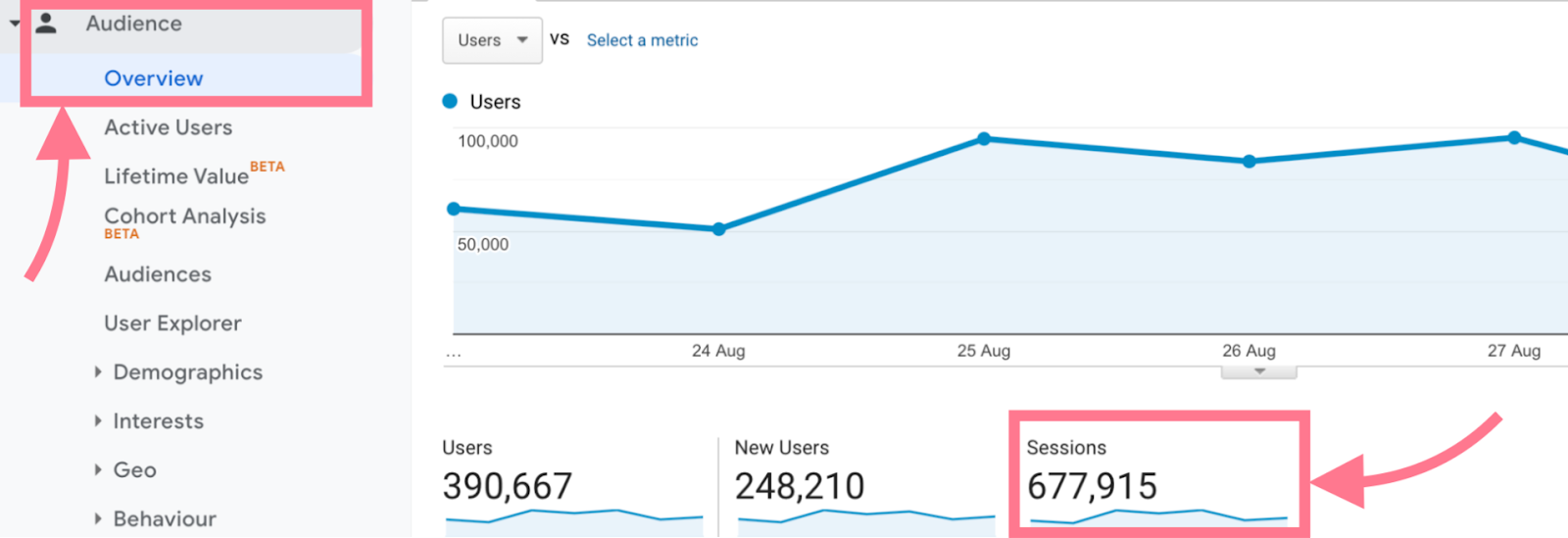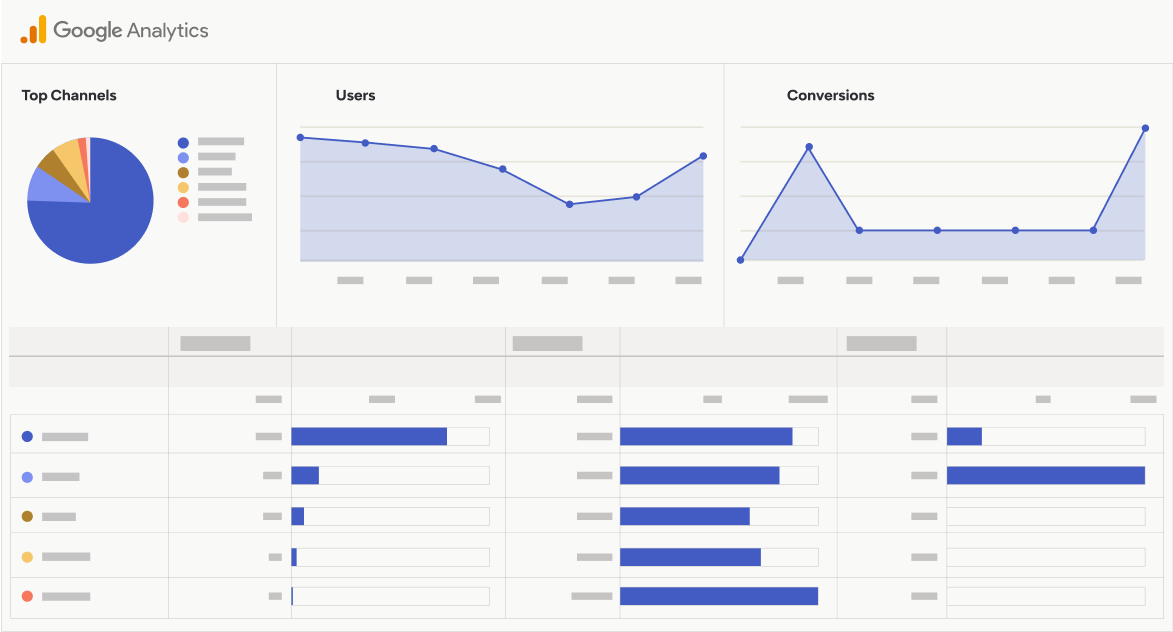When Does the Google Analytics Tracking Code Send an Event Hit to Analytics? Timing and Finest Practices Explained
When Does the Google Analytics Tracking Code Send an Event Hit to Analytics? Timing and Finest Practices Explained
Blog Article
Master Website Insights With Accurate Google Analytics Monitoring Code
The efficient utilization of Google Analytics rests on the accurate execution of its tracking code, a fundamental action often forgotten by internet site owners. This relatively straightforward JavaScript bit, when appropriately put, comes to be the foundation of information collection, supplying understandings into user habits and website efficiency. Nonetheless, challenges can develop during arrangement, possibly skewing the data and bring about mistaken decisions. Recognizing these complexities is vital for making best use of the benefits of analytics. What are the common pitfalls that could weaken your monitoring efforts, and just how can you ensure precision in your strategy?
Understanding Google Analytics Basics
Google Analytics is a crucial device for site proprietors and marketing professionals, supplying indispensable insights into individual habits and web site efficiency. At its core, Google Analytics gathers data regarding site visitors to a web site, enabling users to assess metrics such as website traffic sources, user engagement, and conversion rates. Comprehending these fundamentals is critical for maximizing a web site's effectiveness and boosting individual experience.
The platform utilizes cookies to track interactions, recording information such as web page sights, session durations, and bounce prices. This information is accumulated and presented with personalized control panels, enabling users to picture fads in time. Secret performance indications (KPIs) can be kept track of, such as the overall number of individuals, brand-new versus returning site visitors, and the geographical circulation of the target market.
Furthermore, Google Analytics uses division functions, enabling individuals to isolate certain web traffic resources or customer demographics for even more targeted evaluation. By grasping these fundamental components, site owners can make enlightened decisions about content method, marketing campaigns, and total website enhancements. Ultimately, understanding Google Analytics fundamentals is necessary for leveraging data to drive growth and attain service goals efficiently.
Establishing Your Tracking Code

Copy the offered monitoring code and paste it right into the HTML of your internet site. Ideally, this code should be positioned in the header area of every page you want to track. This ensures that the monitoring code loads before any other material, enabling it to catch information properly. If you are using a content administration system (CMS) like WordPress, there are plugins offered that streamline the assimilation process.
After installment, confirm that the monitoring code is operating appropriately by utilizing Google Tag Aide or the Real-Time records in Google Analytics - when does the google analytics tracking code send an event hit to analytics?. This action is important to validate that your data collection is energetic and exact, setting the foundation for informative evaluation
Typical Monitoring Code Issues
Numerous internet site owners experience typical issues with their Google Analytics tracking code that can impede information collection and analysis. One widespread concern is inappropriate setup. This may happen when the monitoring code is positioned in the wrong section of the web site's HTML, often resulting in incomplete or absent data. Furthermore, having several circumstances of the tracking code on a single page can cause filled with air metrics, as customer communications could be counted greater than as soon as.
Another issue occurs from using ad blockers, which can prevent the tracking code from executing altogether, thus skewing information. when does the google analytics tracking code send an event hit to analytics?. Additionally, failing to set up filters correctly can lead to the exemption of crucial traffic sources or the addition of unwanted referral spam, distorting the information accumulated
Web site proprietors may also ignore the relevance of tracking code updates, specifically when migrating to Google Analytics 4 (GA4) from Universal Analytics. Last but not least, inadequate testing prior to releasing adjustments can result in undetected mistakes in the tracking code, further complicating information integrity. Addressing these common concerns is critical for guaranteeing accurate tracking and informative analytics.
Studying Internet Site Information Successfully
Accurate information collection is only the very first step in leveraging Google Analytics; the real worth exists in effectively evaluating that data to drive enlightened decision-making. To attain this, it is vital to recognize essential performance indications (KPIs) that line up with your company goals. Emphasis on metrics such as conversion prices, user interaction, and website traffic resources, as these will provide insights into individual habits and the general effectiveness of your site.
Using Google Analytics' division functions enables a much deeper understanding of your target market. By damaging down data right into particular demographics, behaviors, and web traffic channels, you can discover fads and patterns that inform targeted approaches. Applying custom records and control panels can enhance this procedure, making it possible for fast accessibility to pertinent data.
Moreover, on a regular basis assessing data trends with time aids to identify anomalies and possibilities for renovation. Utilize visualization tools to present information in a conveniently absorbable format, facilitating more reliable interaction with stakeholders. Eventually, the capacity to assess site information efficiently equips companies to make critical decisions that improve user experience, maximize review advertising and marketing initiatives, and drive development.

Ideal Practices for Accurate Monitoring
Implementing effective monitoring practices is vital for getting trusted data in Google Analytics. To guarantee accurate monitoring, start by appropriately installing the Google Analytics tracking code on every page of your site. This can be completed through a tag manager or by directly embedding the code right into the HTML.
Next, configure your Google Analytics account to exclude inner website traffic. This can be done by establishing filters that identify and get rid of sees from your organization's IP address, thus stopping manipulated information. Furthermore, make use of event tracking to check details customer interactions, such as downloads or video clip plays, which standard page views may forget.
Frequently audit your monitoring configuration to validate that all functions, such as objectives and ecommerce monitoring, are functioning appropriately. Develop a regular naming convention webpage for your events and projects to help with easier reporting and analysis.
Finally, take into consideration leveraging UTM specifications for projects to obtain understandings right into the performance of different advertising and marketing initiatives. By complying with these best practices, you can improve the precision of your information collection and analysis, inevitably bring about even more educated decision-making for your website.
Conclusion
Exact implementation of the Google Analytics tracking code is necessary for grasping web site understandings. By ensuring the monitoring code is properly positioned and consistently examined, web site proprietors can capture important user interaction data, thus promoting the identification of crucial efficiency indicators. Reliable analysis of this information, integrated with adherence to ideal practices, makes it possible for educated decision-making and the optimization of on the internet strategies. Inevitably, a robust monitoring framework improves the capacity to drive engagement and boost total web site efficiency.

Not enough screening before releasing changes can result in unnoticed errors in the monitoring code, further complicating data reliability.Carrying out reliable tracking techniques is crucial for click here for more info obtaining trustworthy data in Google Analytics. By making certain the tracking code is properly positioned and routinely investigated, site owners can capture vital individual interaction information, hence promoting the recognition of crucial performance indications.
Report this page